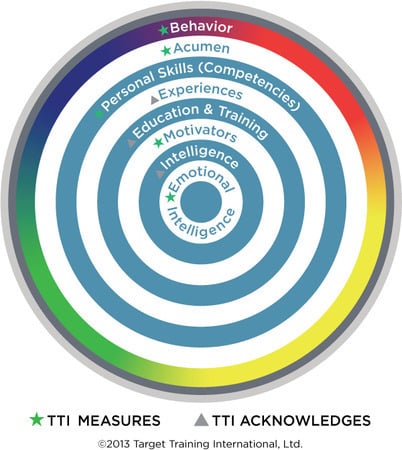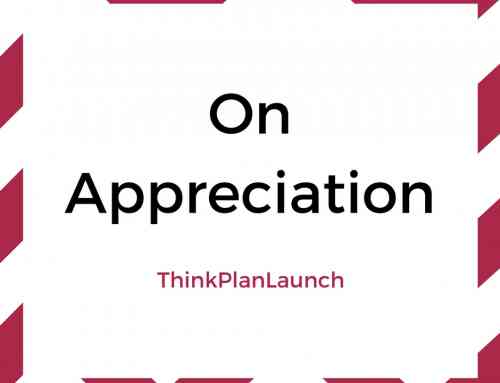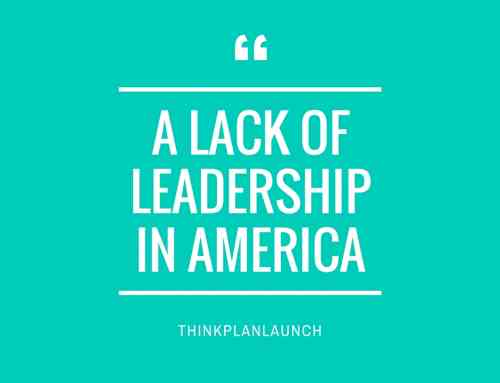Table of Contents
Job Benchmarking Defined
Job Benchmarking is the process of creating a point of reference against which a particular job may be compared or assessed.
Most human resources departments perform job benchmarking on some level, and this generally precedes the writing of job descriptions. Most of us are familiar with reviewing such job descriptions. They generally describe how the job is done and what its requirements are in terms of education and experience.
What’s in a Job Description?
Since we’re on the subject, let’s talk about job descriptions a little bit more. According to the US Small Business Administration, effective job descriptions include factors such as:
- Individual tasks involved
- The methods used to complete the tasks
- The purpose and responsibilities of the job
- The relationship of the job to other jobs
- Qualifications needed for the job
Breaking this down into further detail, these are the specific elements the SBA recommends employers include in their job descriptions:
- Job title, objectives, and purpose
- Summary of the nature of the job
- Description of the broad function and scope of the position
- List of duties or tasks performed critical to success
- Key functional and relational responsibilities in order of significance
- Description of the relationships and roles within the company, including supervisory positions, subordinating roles and other working relationships
Depending on the nature of the situation, you may also want to include the job location, equipment that will be used, certifications needed, salary range, and relocation requirements.
Common Issues with Job Descriptions in Hiring
Many employers do a good enough job in creating their job descriptions. But if that’s the case, why does the average employer have such a hard time finding, hiring, and retaining great people? Let’s examine a few common issues related to job descriptions during the hiring process.
1. Exaggerated Resumes
First and foremost, anyone who has worked in HR for any length of time can tell you the average resume is full of embellishments. In an effort to put themselves in the best light, many candidates will smear the truth – and in some cases, even outright lie – about their accomplishments, education, and work experience.
Even those candidates who mean well know they need to highlight their accomplishments to stand out, so they paint a picture that puts them in the best possible light. Unfortunately, this makes it harder for employers to view the whole person and understand who to hire.
Some employers are aware of this issue, but they don’t know how to get a proper look at the “whole person” when making a hiring decision. Hence the importance of job benchmarking, which we will discuss in more detail below.
2. Outdated Job Descriptions
Secondly, many employers rely on outdated job descriptions – ones they may not have even created themselves! In an effort to be efficient, many employers and hiring managers recycle job descriptions for years, even while the nature of those jobs changes with advances in technology and organizational maturity.
Some employers also “borrow,” or copy-and-paste job descriptions used by other companies for similar positions within their own company. This (lazy) approach often falls short, though, because there will always be unique factors depending on your company’s culture, departmental structure, expectations, compensation, and managers. Of course, failing to address the unique factors can result in mismatched jobs/candidates and a frustrating cycle of trying to fill and re-fill the position.
Then there are those employers who do without formal job descriptions altogether. These are usually smaller companies without HR departments, where a busy hiring manager or company President finds himself writing a quick, off-the-cuff paragraph about the job and then posts it to Craigslist hoping for the best.
Anytime a job description is outdated, borrowed, or nonexistent – there will be gaps between the listed and actual requirements of the job. Such gaps mislead candidates into applying for jobs that aren’t quite what they thought, and also misleads employers into hiring people who aren’t the best fit.
3. Unrealistic Job Descriptions
We’ve all seen these before. The employer wants to hire Superman, but Superman doesn’t exist (at least not in high quantities)!
In order to apply for such a job, your candidate might need fifteen years of experience, two advanced degrees, four certifications, the ability to type 150 words-per-minute, impeccable personal skills, excellent attention to detail, advanced computer programming knowledge, six professional references, creative writing ability, and the ability to juggle while running backwards down a busy street. Oh, and the job starts at $12/hr.
There are two fundamental issues going on here: 1) The employer is misplacing its efforts into hiring for an unlikely position, and 2) There are many people who will apply to this position (note: those with the exaggerated resumes!) who claim to actually have all of these skills. This perpetuates the employer’s illusion that their expectations are reasonable, and almost always leads to disappointment and frustration down the road when they discover Superman can’t actually fly.
When this occurs, there is a great learning opportunity presented for the company – the chance to look inwards and evaluate what went wrong during the hiring process. Perhaps the job needs to be split into two jobs for all responsibilities to be effectively managed, for example.
However, it’s not always human nature to accept accountability for outcomes, and many hiring managers will simply write off their recently-departed “Superman” as a bad apple. They fail to learn their lesson and hopelessly begin their search for the next Superman.
4. Showing Your Cards
If you were playing a game of poker, would you show me your cards? Of course not – because it would give me an unfair advantage. When it comes to hiring, though, this is exactly what is happening.
By reviewing a job description, candidates are empowered to tailor the language of their resumes, cover letters, and interview responses to say exactly what you want to hear. The same is true of interviews. Many times a hiring manager will unknowingly undermine the interview by spoon-feeding the candidate correct answers to their questions.
Example: “Jack, let me explain something to you – it’s very important to ACME, Inc. that we hire high-performing, accountable, and consistent salespeople. Now tell me, what type of person are you? We need to make sure you have what it takes to succeed here.”
Of course, no intelligent candidate is going to respond to this question by directly regurgitating the exact words you used: “high-performing, accountable, and consistent”. But many are smart enough to hear this, and then spin their response to tell you what you want to hear.
Now you might be thinking, “Isn’t some of this inevitable?” Yes, some of this is inevitable – especially in the case of job descriptions. You cannot hide your job description from prospective candidates, and even in interviews it may be hard not to “show your cards.”
However, this doesn’t mean that you can’t do anything to improve your hiring process. This issue and the others listed above can be overcome by getting a handle on the whole person.
The Importance of Understanding The “Whole Person” in Hiring
What is the “whole person,” anyways?
Let’s take a look at the following graphic from our strategic partner, TTI Success Insights:
The whole person is made up of their:
- Behavior
- Acumen
- Personal Skills (Competencies)
- Experiences
- Education & Training
- Motivators/Driving Forces
- Intelligence (IQ)
- Emotional Intelligence (EQ)
Sadly, the average hiring process looks at just two (2) of these factors: experience and education.
Sometimes an above-average hiring process will do its best to glimpse personal skills (competencies) as well, but since these aren’t always easy to measure, we often wind up taking the candidate’s word that they’re capable.
The question we should all be asking ourselves is simple: Why are we only looking at two or three dimension of a person, when there are eight to evaluate?
We hire people for their education and experience, but we fire them for the other reasons on this list. Their behavior is unacceptable, their motivation is poor, their people skills (read: EQ) suck, and/or their ability to integrate into the work environment is inhibited by a lack of acumen or work competencies.
Hence the importance of understanding the whole person better, to ensure the best possible hires are made with confidence.
Creating Job Benchmarks that look at the Whole Person
Remember, a job benchmark is our comparison point against which a job – and ultimately the person doing that job – can be compared.
For the sake of creating better teams, increasing profits, and reducing costly losses resulting from bad hires, employers must strive to look at the whole person when making hiring decisions. This does not mean changing existing processes so much as building on top of them, and strengthening them – keeping them moving in the right direction.
Importantly, employers need objective and reliable methods of evaluating the whole person when making hiring decisions. There’s no sense leaving this to guesswork, after all. What tools are available to you, though, to take action?
Our Patented Job Benchmarking Process
Our job benchmarking process is the result of over three decades of workplace performance research conducted by our strategic partner, TTI Success Insights. After reviewing and analyzing data from over twenty-six million individual assessments taken, from over one-hundred thousand companies around the world, the results are in – and our process is highly effective.
What factors of the whole person can we look at during job benchmarking?
- Behavior
- Acumen
- Personal Skills (Competencies)
- Experiences
- Education & Training
- Motivators/Driving Forces
- Intelligence (IQ)
- Emotional Intelligence (EQ)
Our patented process looks at Behaviors and Motivators (at a minimum), and can also be supplemented to include Acumen and Personal Skills (Competencies). TTI has designed specific workplace performance assessments over the past 30+ years to accurately assess for these factors, and their validity has been confirmed by rigorous third-party statistical analysis.
When combined with existing screening processes to look at education, training, and experience, this process effectively allows an employer to consider six of the eight factors (of the whole person) when making a hiring decision.
Note: our emotional quotient assessment is not typically involved in the job benchmarking process, but can be used as a supplement to increase this number to seven, and is recommended for ongoing training and development.
Creating a New Benchmark from Start to Finish
What’s involved with creating a powerful, sophisticated job benchmark like ours? Surprisingly, not much!
- Identify Subject Matter Experts (SME’s)
- Identify Key Accountabilities for the job
- SME’s take Job Assessments online
- Review & Analysis of compiled data
- Establishment of Job Benchmark
The first step we take is to round up all the people at your organization who know about the position – this might include the HR director, the hiring manager to whom the new employee will report, and a couple employees who are currently in the position and performing well. These people are considered your Subject Matter Experts (SME’s) or stakeholders, as they are the most likely to know what’s important (and what’s not) in terms of getting the job done properly.
The second step involves facilitating a group session with these SME’s to identify the key accountabilities for the job being benchmarked. This often takes 2-3 hours but can be accelerated or slowed down if necessary.
The third step involves having the SME’s take specific Job Assessments (corresponding to the aformentioned factors, such as behaviors, motivators, acumen, and personal skills) to “calibrate” our system for usage. The SME’s respond to the assessment not with their own personal answers to the questions, but with the responses they feel would be appropriate for the person they hire for the job.
Finally, after a careful review and analysis of the data collected from the key accountability session and online job assessments, we are able to construct an accurate benchmark – one that will increase your hiring confidence from the 50%-range into the 90%-range immediately – that strengthens your existing hiring process without changing it.
Conclusion
Our hiring paradigm must shift to look at the whole person if we want consistently great hires.
We should still consider experience, education, and training as necessary factors for screening during the hiring process – but importantly, we must also come to view the proper behaviors, motivators, work competencies, and acumen with equal weight.
After all, having the proper education, experience, and training are bare-minimum prerequisites. These things alone do not make a candidate stand out, nor do they explain why people with such qualifications do not perform as expected.
Remember: it is a candidate’s on-the-job behavior, level of motivation, and overall level of competency that will determine how long they last.
If you’re ready to take control of your hiring process, get in touch with us to learn more about job benchmarking.





Leave A Comment